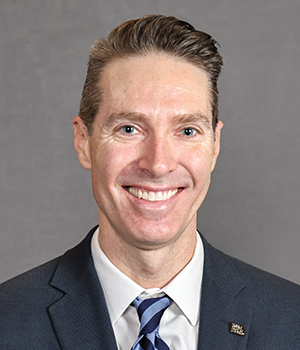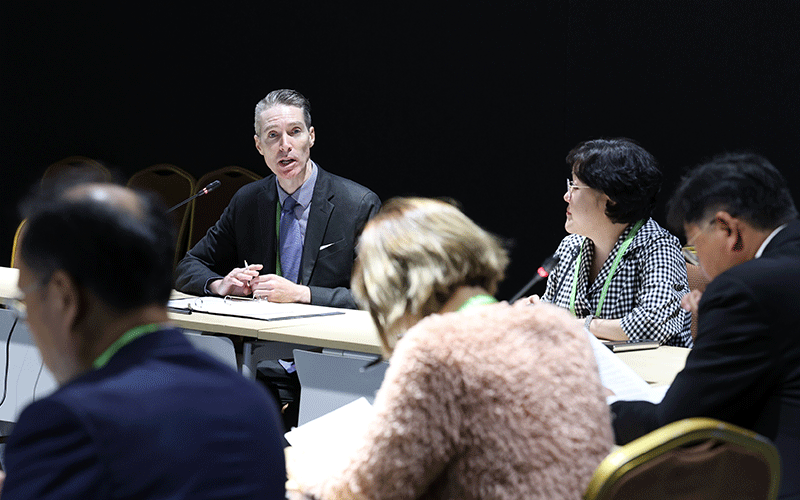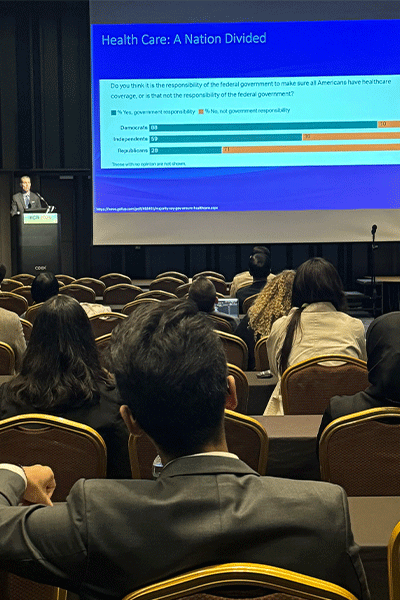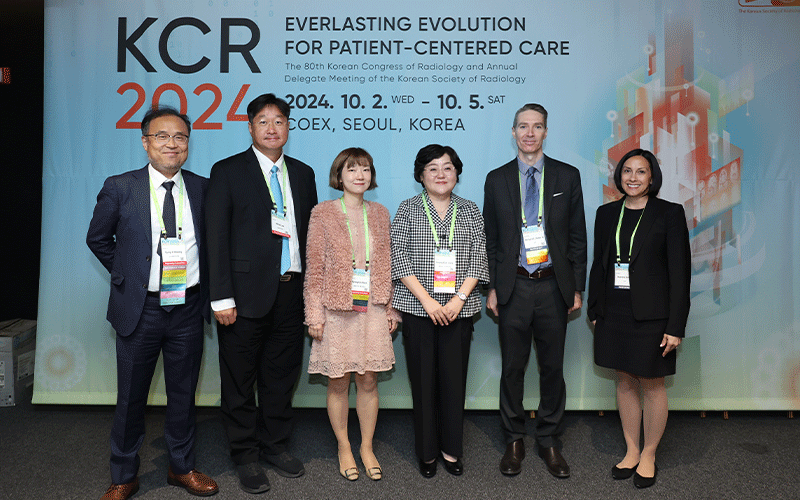Reflections on the Korean Congress of Radiology
We Have Much In Common

Richard E. Heller III, MD is senior vice president, health policy at Radiology Partners, a national radiology practice based in the U.S. He also serves as clinical associate at University of Chicago Medicine, Comer Children’s Hospital in Chicago, Illinois. Both in his role at Radiology Partners and for the field of radiology overall, Dr. Heller is a strong advocate for responsible health policies that protect patients and the physician practices that serve them. He has been recognized for his dedication to radiology policy and practice improvements, including with the Practice Values Award for Teamwork at Radiology Partners Practice Leadership Summit in 2019. He has previously served on the RSNA Board of Directors as the liaison for public information and corporate relations.
This past fall, as a representative of RSNA, I was honored to attend the 80th Korean Congress of Radiology (KCR) in Seoul, Korea. Hosted by the Korean Society of Radiology (KSR), the conference offered invaluable insights into advancements within our field, while highlighting the challenges our specialty faces globally, particularly in workforce shortages and rising demand for medical imaging-based care.
In her keynote, KSR President Dr. Seung Eun Jung addressed the challenges facing Korea’s medical community, against the backdrop of recent medical trainee strikes. She noted the intense demand for radiologic services paired with a limited radiologist workforce, which has led to problems with burnout. Although Dr. Jung spoke from Korea’s perspective, her concerns mirrored discussions I've had with colleagues across the U.S. in both academic and private practice settings. Following Dr. Jung, Dr. Katherine Halliday, president of the Royal College of Radiologists, presented on England’s similar capacity struggles, noting a 30% shortfall in radiologists that continues to worsen.
Adding the U.S. perspective, I delivered a talk titled, “Sweet Home Chicago: An Overview of the U.S. Health Care System.” While acknowledging that American health care excels in certain areas, I also highlighted areas in which we lag other high-income nations in population health measures. I shared data from a survey showing that most Americans believe the U.S. healthcare system is either in “crisis” or experiencing “major problems.” With regards to radiology, my comments were very similar to those made by Drs. Jung and Halliday; we face increasing demand for our services, a shortage of radiologists, and ongoing financial pressures on reimbursement.

Conversations with Drs. Jung, Halliday, and other attendees underscored how closely aligned our challenges are, despite the fundamental differences in our healthcare structures. In England, the socialized model of the National Health Service (NHS) contrasts sharply with the predominantly private U.S. health insurance system. Nevertheless, demand outpacing workforce supply is a universal issue.
We also discussed the different approaches being tried to address these issues. Dr. Halliday described the UK’s use of radiographers in interpreting plain films, a solution developed to help meet capacity needs. In the U.S., advanced practice providers (APPs) are being integrated into radiology departments in largely non-interpretive roles. There was widespread interest in the role of AI as a potential way to alleviate the capacity challenge, an idea resonating with this year’s RSNA annual meeting theme, “Building Intelligent Connections.”

A final note on the exceptional hospitality of the Korean Society and its members, who organized an outstanding conference that provided a platform for meaningful international collaboration and technical advancement.
Reflecting on the KCR, my key takeaway is that radiology’s core challenges are indeed universal. Back in the U.S. shortly after the KCR, I shared slides from Drs. Jung and Halliday at a meeting. Many attendees noted how closely the issues mirrored those in their department. Beyond shared challenges, this experience affirmed the deep commonality we share as radiologists, united in our dedication to enhancing patient care through medical imaging. I left Korea proud to be a radiologist and honored to be a part of this global community.
